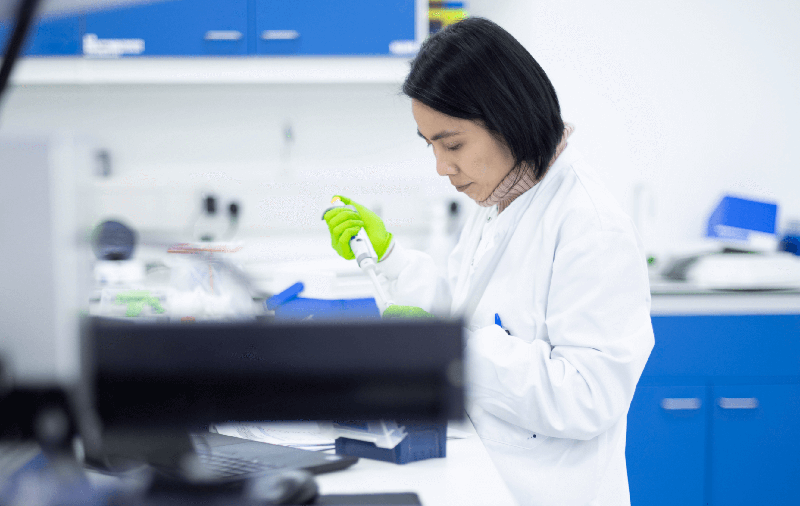
dU Containing
找不到您想要的产品? 联系我们咨询
Ideal for High-Throughput Assays
- Optimized dTTP to dUTP ratio for high sensitivity and specificity.
- High efficiency, giving excellent performance in multiplex qPCR assays.
- Prevents carry-over qPCR contamination.
A combination of the latest advances in buffer chemistry and PCR enhancers and stabilizers, in conjunction with an antibody-mediated hot start polymerase and dNTP/dUTP mix. designed for highly reproducible, accurate target amplification. Assay specific primers and probes are added, and UDGase is used to remove background PCR product contamination, ideal for high-throughput assays where there is a greater risk of false positives from cross-over contamination.
产品资料
低 LOD 1 步 RT-qPCR 混合液 低 LOD 1 步 RT-qPCR 混合液
分子诊断的原料试剂解决方案 分子诊断的原料试剂解决方案
As qPCR can amplify tiny amounts of DNA, preventing contamination is essential, as even small amounts of qPCR contamination can produce false positives. Cross-over qPCR contamination can include cross-contamination from other samples, contamination from elsewhere in the laboratory, and carryover qPCR contamination from amplification products and primers used in prior qPCR experiments. The latter causes most of the false positive results seen in qPCR. Preventing contamination can be difficult and so laboratory procedures must be in place to ensure DNA from one assay is not re-amplified in subsequent assay.
Uracil DNA Glycosylase (UDGase) can specifically degrade products that have already been through the qPCR process and have incorporated dUTP, leaving native nucleic acid templates intended for amplification intact. UDGase activation occurs as the first step of qPCR at a 50°C incubation for 2 minutes and then the UDGase is denatured when the temperature increases to 95°C during hot-start activation.
Uracil-DNA glycosylase (UDG or UDGase) is a family of enzymes comprising six sub-families. Family I UDGase enzymes are called UNG (uracil-N-glycosylase gene), so there is no difference, the terms UDG, UDGase and UNG are commonly used interchangeably because they perform the same function in qPCR—namely to prevent carryover qPCR contamination.
Total elimination of contaminants is not always accomplished using this technique, particularly where PCR product length is short, which is a common situation in qPCR assays. In addition, there is the possibility, particularly when the initial sample contains only one or a few target molecules, that inclusion of UDGase may reduce amplification efficiency and thereby delay detection and so reduce sensitivity.
No, the qPCR master mixes contain dUTP, but UDGase needs to be added prior to running the qPCR reaction.
与我们的专业团队联系
想了解更多迈迪安免疫和分子产品信息?欢迎与我们联系